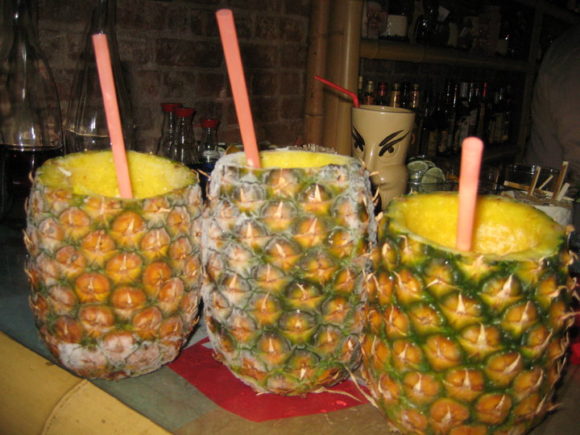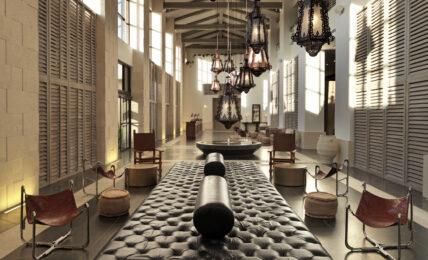Getting To Frozen Drink Perfection
By Richard Boccato and Giuseppe Gonzalez of Painkiller, NYC
WHAT WE KNOW NOW WE’D LIKE TO SHARE IT WITH YOU
Presently, we would argue that the most popular incarnation of the Piña Colada usually is made with cream of coconut. Out of the combination of sheer boredom and a quest for personal enlightenment, we have personally tried to replicate every recipe that we have found for the Piña Colada. All of our efforts to recreate these “classic” drinks were made with silver rum and freshly extracted pineapple juice. We prepared them in blenders and served them frozen (although this detail is never specified in writing in the “classic” recipes). As stated earlier, the main difference (and the only one that ultimately matters) in the preparation of the Cuban variation of these rum and pineapple cocktails versus the Puerto Rican style is the use of coconut.
Through years of previous experience making cocktails we have discovered that drinks that have higher water content also need to be sweeter than a drink that is prepared with less dilution and without the assistance of ice in the vessel it is served in. Therefore, frozen cocktails like the Piña Colada have a relatively large amount of water with respect to a Daiquiri that is shaken and served up. From our experience thus far at Painkiller, we are fairly certain that it is safe to say that our frozen drinks have unusually high water content.
We will also say that it was concluded definitively in our opinion that due to the sweetness in cream of coconut that the “Puerto Rican” or “1954” Pina Colada is most likely the version of the drink that we all consider the prototype. All Cuban-style Pina Coladas that we prepared with coconut milk and/or coconut water were either too diluted or too bland.
Consumed on its own, cream of coconut is horribly sweet and difficult to work with in shaken drinks due to the density it adds (even more so in stirred cocktails). In frozen cocktails, qualities that are detrimental to shaken drinks like viscosity and sweetness become beneficial. The higher water content in Piña Coladas is brought into balance by the richness and sweetness of the cream of coconut. The addition of fresh pineapple and its high starch content bring the lighter alcohol and the highly dense cream of coconut into harmony within the cocktail. Let us continue on to the preparation of our own Piña Colada.
Preparation
At Painkiller, we prepare our Piña Colada by combining the following ingredients in a blender:
1 1/2 oz. Aged Puerto Rican Rum
(The original may have called for silver or white rum, but we favor the depth of flavor that aged rum lends to the cocktail)
1 1/2 oz. Cream of Coconut
(If you do not want to make your own cream of coconut using the technique mentioned in this essay, a simple recipe for the home is 3 parts cream of coconut to 1 part coconut cream. This lightens the sweetness without diminishing the body).
1 1/2 oz. freshly extracted pineapple juice
(Sadly, there is no substitute for this. With very few exceptions, we do not serve anything that we do not juice fresh in-house. One could certainly use unsweetened pineapple juice from a can and the results would be potable. HOWEVER, the canned alternative will NEVER yield a cocktail that compares to one that features freshly squeezed juice.) Add four large chunks of pineapple. Add approximately 8 ounces of crushed ice. Blend for 45 seconds. Strain into a cored out pineapple. Garnish with shredded coconut, an orange slice, and a cherry.
CONSIDER THIS AS YOU SIP
The Piña Colada may have been invented in Cuba in 1910, in Puerto Rico in 1954, or it may have been pioneered by a visionary pirate in the Caribbean sometime in the 1800’s. It goes without saying that in our opinion, the version made popular by Donn Beach is the only Piña Colada worth preparing. It brings nostalgia to all those who consume it and it is globally recognized as a staple in the realm of frozen cocktails. This drink should no longer be a guilty pleasure to be consumed on luxury cruises and in beach cabanas. Every bar should have a blender to make this drink alone, if nothing else. We may be getting ahead of ourselves, but who knows what the future holds.
Mahalo,
Giuseppe and Richard


